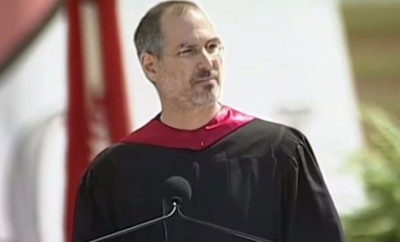
Insider Secrets, For Implementing What You Know
If you want to make things happen in your life, you have to implement what you know. Yes, that’s obvious. We all know that. We know that we have to actually execute our intelligence. And once we do that, we then have to follow-through and persist on that knowledge. In fact, the best way to achieve this is to turn what you know into lifestyle, into your way of being in the world. That is, to turn your intellectual knowledge into practical how-to knowledge that’s in your muscle memory.
Now, there’s a fabulous reason for this strategy. Namely, when what you know in your head is transferred to your body, to your muscles, to your neurology, then as you close the Knowing-Doing gap, you create within your very neurology a way of being so that you simply live out and execute your knowledge.
We all know this, yet we don’t all do it. And that’s the human dilemma—we know more than we do. We know far more than we do. So much of what we know, we do not do. This is what opens up the Knowing-Doing gap and the need to mindfully transfer knowledge into action, creed into deed. What do you know that you don’t do?
What do you know intellectually would enrich your life, make things better for you in terms of health, relationships, finances, work, etc – you know it, yet you don’t do it? In the Wealth Creation trainings I always begin with “Spend less than you make” as a basic principle for building up capital and for becoming skilled and practiced with managing money. In health and fitness, there are basic principles – “Drink plenty of water each day, 4 to 8 glasses.” “Exercise a little bit every day and you’ll feel better and have more energy.”
In Neuro-Semantics we have a pattern called the Mind-to-Muscle Pattern.1 It’s a pattern that we use to linguistically drive what we know in our head into our body. I developed the pattern during the time that I was trying to figure out how I could facilitate people in the Wealth Creation trainings to thoroughly integrate the principles of financial independence that they would have them in their bodies. Then they would be able to act on them intuitively so they could then make financial independence an integral part of their life.
After spending eighteen months studying the field and coming up with the content information about how to create financial independence in a decade, I began to confront several obstacles. The first obstacle involved the fact that almost all of the insights of wealth creation are stated in abstract principles as “rules” or “laws” or “secrets.” The second obstacle was that while people could easily understand the principles, getting themselves to actually act on and perform them was an entirely different matter.
At that point, I decided that what I wanted to create was a process whereby people could stop widening the gap between what they know and what they do. I wanted a pattern for closing the Knowing-Doing gap and for getting what they know into muscle-memory. I had encountered the same challenge when I first taught the premises of communication from the field of NLP. “The map is not the territory,” and “The meaning of my communication is the response I get.” Great ideas! Yet how do we experience them, even feel them in our bodies so that we can know them in our bodies?
What I discovered, quite by accident, is that expressing the concept as a principle, as a belief, and as a decision requires different degrees of neurology. I discovered that it took more neurological engagement to express the idea as a belief than as a principle. That got me interested in different linguistic expressions. I figured that if merely saying the words, “I believe that wealth is created by spending less than I make” engaged more of my body than saying, “I understand that wealth is created by spending less than I make,” then what other linguistic expressions would help me to coach my body to increasingly feel an idea and to incorporate it so much that it becomes embodied within my very neuro-pathways and muscles?
From that enquiry the Mind-to-Muscle Pattern emerged. This pattern uses your linguistics to transfer an abstract principle of something that you know and understand so that it becomes a neurological pattern in your body. And when it is in the body, then it is something that you can experience and feel. It is something that can guide the way you move and operate in your daily life.
Since that time, thousands upon thousands of people around the world in more than 40 countries that I know about have various mind-to-muscle various principles as they have learned how to coach their body to feel some of their greatest and most inspiring ideas. In addition, I continue every month to integrate more of what I know in my head so that I get it into my own neurology. And from time to time I also work with people privately using this same process. As a result, this ongoing use of the pattern has continued to help me refine the pattern and to make finer distinctions about it. Two are highly critical with regard to transferring what you know in your mind so that it’s part and parcel of your way of being in the world.
Insider Secret #1
The Mind-to-Muscle pattern works when you start with a principle, concept, premise, or abstraction, but not with a goal. How then do goals fit into the pattern? The pattern ends with goals. The pattern ends with several questions designed to elicit specific first-step goals. And when you do that, you create a new direction for yourself. The final elicitation question is, “What is one thing that you can do today to make this real in your life?”
By asking the “What one thing can you do today” question repeatedly, you create a list of first-step goals and this creates a direction. You create a direction full of goal steps as an expression of your principle. The secret is this: Don’t begin with a goal or outcome, but a principle.
The statement, “I want to become a millionaire” is a goal, not a principle. Goals are things that you do. So what are you going to do to become a millionaire? As such the goal is too broad and vague. To elicit a principle behind this statement, ask:
What do you know intellectually as a principle, concept, premise, presupposition that if you could just get yourself to actually do would indeed put you on the pathway to becoming a self-made millionaire?
Whatever your answer is, state it as a general principle.
“Wealth is created by spending less than you make.” “Wealth is created by saving something every week.” “Wealth is created by continuous learning and improvement of products and services.” “Wealth is created by adding value.”
“I want to become heathy and fit.” Okay, great. That’s an overall and general goal. What will you do to make that a reality? And, to test the realism of those more specific goals,
What do you know intellectually as a principle, concept, premise, presupposition about health and fitness that if you could just get yourself to do would put you on a pathway to health and fitness?
Again, turn into general principles:
“Health is cultivated by exercising regularly.” “Health is facilitated by drinking 6 to 12 glasses of water a day.” “Health is improved through eating balanced meals.”
Goals refer to the specific outcomes you want. First-step goals will be small action steps that you can do today and every day which in turn, activates your responsiveness and creates momentum. With sufficient easy-to-accomplish first-step goals, you step forward on a daily basis as you take the first step of a journey to a much more audacious goal. This initiates a critical factor — momentum. And over time the momentum grows so that you will find yourself achieving your weekly, monthly, and yearly goals. This enables you to embody the principle in your mind. It gives flesh-and-blood reality to your mental abstraction. It closes the Knowing-Doing gap and enables you to congruently do what you believe in doing.
Insider Secret #2
Here’s another insider tip: Use your neurology to feel the abstract principle. From the neuro-sciences, we know that the kind of “knowledge” that we can, and do, embody in our muscle memory is procedural knowledge – the knowledge of how to do something. That’s why typing, driving, tying a bow, the actions and activities in sports like swinging a bat, throwing a ball, etc. are easily incorporated into muscle memory. As you activate and “run” your neuro-pathways, you evoke and act out the information as procedural knowledge. When you do that, then like riding a bike, once you know it you can’t forget it, you will do it naturally and intuitively.
This explains how a sports event, driving a car, and the rote activities you do on the job, as procedural knowledge, are easily turned into “knowledge” that your muscle memory can incorporate and carry out without conscious awareness. It explains why once we learn some things, the knowledge drops out of consciousness, and we operate unconsciously or intuitively. It’s as if the knowing has somehow become incorporated at the muscular level.
Consider the abstract ideas that I mentioned earlier, “The map is not the territory,” and “The meaning of my communication is the response I get.” How do we turn these ideas into muscle memory? The answer is actually pretty simple and somewhat surprising. Find a way to gesture them. That’s right. Use your arms, voice, movement, gestures, breath, etc. to act them out as you say them and as you do so, you will be “running” your neuro-pathways, sending messages down the neuro-pathways and thereby embodying the abstraction at the muscular level.
With “The map is not the territory,” I use my right hand and point to my head as I say, “the map.” Then using my right arm to move it from my head to create a slash movement, going from the top of my head and down to my far right to say “is not” while emphasising the word not. I then end by pointing with my index finger on my right hand as I pan the area in front of me saying “the territory.” Together the motion of hand to my head, slashing down to my far right, then panning the area in front of me as I say, “The map is not the territory” enables me to feel this concept. Miming space on me and around me repeatedly has run the neuro-pathways so that I now experience my mapping as different from the territory.
What works best for embodying principles is first to create a procedure for the abstract knowledge, and to then repeat that process over and over until the neuro-pathways involved in running that pattern become a ritual, game, or activity. The procedure can be the simplest of things like gesturing the idea as a mime would do so to create some scenario. It is not the complexity of the action that makes the difference, it is the action itself. That is the key.
Today in training and in coaching, I emphasise that what we are doing in this pattern is coaching the body to feel an idea. That’s why you can accelerate the process by doing two things.
First, exaggerate the physical movements and develop specific gestures. The more you exaggerate, the more you use your body, and hence your neurology and neuro-pathways. In Neuro-Semantics this is what we refer to as semantic space and semantic movements. We turn the actual space around us into a semantically loaded (e.g. meaningful) area so that our movements are not random but significant. Each time we move our hand, for example, we do so to embody and symbolise our meanings.
The second is to emotionalise the movements. Access and evoke as much emotion as you can around the concept. The more emotion, the more motion which is what e-motion is all about anyway (an action tendency activated by the motor cortex to get you to move-out-from where you are).
Summary
It is possible to transfer mind-stuff so that it is body-stuff. That’s what the Mind-to-Muscle pattern is all about. It’s a way to close the Knowing-Doing gap so that we become the kind of people that implement what we know. It’s a way to begin to coach the body to feel our greatest and most inspiring ideas so that we then embody those ideas and operate from them intuitively.
The key is making sure that the concept is a concept, a principle, an abstract understanding and not a goal and then operationalise the abstraction so that we train and condition our neurology to “know” it at that level. When we can do that, then the “knowing” occurs at multiple levels of consciousness, not just intellectually, but also at the level of belief, decision, emotion, and action.
References
1. To know more about the Mind-to-Muscle Pattern see the articles on the Neuro-Semantic webiste about Closing the Knowing-Doing Gap, www.neurosemantics.com. Also, see Secrets of Personal Mastery (Hall, 1999). This pattern is regularly trained and taught in the APG (Accessing Personal Genius) training, see www.neuro-semantics-training.com for schedule and details.
www.self-actualizing.org
www.meta-coaching.org
www.neurosemantics.com
www.neuro-semantics-trainings.com







